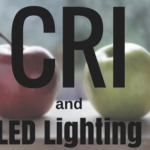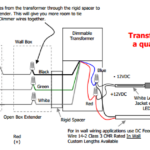 Now that you have decided on LED lighting over CFL or incandescent lights, after reviewing our prior blog: LED Under Cabinet Lighting Solutions. ,you are ready to move onto the harder and more in-depth decisions in regards to your lighting system! Here we will review the options you have when deciding to install a low voltage lighting system. We will cover basic considerations beginning with system type, color choices, and lastly mounting options.
Now that you have decided on LED lighting over CFL or incandescent lights, after reviewing our prior blog: LED Under Cabinet Lighting Solutions. ,you are ready to move onto the harder and more in-depth decisions in regards to your lighting system! Here we will review the options you have when deciding to install a low voltage lighting system. We will cover basic considerations beginning with system type, color choices, and lastly mounting options.
System Types
Choosing a system type is an important factor when it comes to low voltage lighting. Layout of the kitchen and the stage of renovation or remodeling typically play a large role in the deciding which system will work the best for you.
Plug-In System:
A Plug in system is simple to use, and can be installed without the assistance of an electrician in just minutes! This system allows you to use an electrical outlet to power the lights. Many customers can take advantage of outlets above microwaves, behind the fridge or other appliances,and even can have electrical outlets hidden away in the cabinets. Another benefit of the plug in system is that it also offers a variety of in line dimming options. These systems work great for kitchens that are near completion and want to avoid going into the electrical lines behind the walls.
Hardwire System:
A hard wire system taps directly into your home’s 120V circuit and converts to 12V. This allows for one or multiple lines off the output of the transformer, and even the opportunity to utilize existing cable drops that may already be in place. This system allows you to utilize a compatible low voltage magnetic wall switch to control the lights. We highly recommend having a licensed electrician install the transformer so there is no injury to anyone or damage to the lights. This system is great for customers who are in the middle of a renovation, or would like to utilize the wall switch with dimmer for their lights.
Combination:
Depending on the kitchen layout and the spaces being lit up, a customer can also find themselves utilizing both system types in a single room! Our magnetic switch is a popular choice when it comes to lighting up the interior of a cabinet, like a lazy susan corner cabinet or even a pantry. We recommend using the plug in power supply for the magnetic switch so there is the opportunity for constant power to turn the lights on every time the cabinet or door is opened.

Product Choice
In the previous blog we narrowed down the differences and similarities between the flexible strips, pro series and designer series panels. But how do you know which product will work best for what you need? This answer lies within your kitchen! Kitchens come in all shapes and sizes, some kitchens work well with our kit options utilizing our Pro Series or Designer Series Panels. Other kitchens need something more customized, which is where flexible strips or custom designer panels come into play! All panels and flexible strips (not including RGB) can be hard wired or run on a plug in system.
Color Choice
LED’s options when it comes to color can be a bit tricky. When LED’s made their debut, there was a single stark white light as the only option: medicinal in nature and not something everyone wanted in their homes. Now there are different colors as well as whites! We offer two options for white, Warm White and Cool White.
- Warm White is a 3200K, similar to an incandescent light (referred to as having a more yellow tone)
- Cool White is a 6500K, similar to a fluorescent light (referred to as having a more bluish tone)
The choice between Cool and Warm is entirely a personal preference. With factors such as color scheme, paint color, and the specific room you are lighting you may have a hard time choosing. Some components in a kitchen for example: the color of the counter tops, back splash, and cabinets will most likely play a role in the color choice. Warm white is considerably a more popular choice than cool white in most kitchens, when on the other hand cool white is most popular among garage and retail applications.

Mounting Options
LED flexible strips can be mounted in a few different ways, while keeping some key elements in regards to design and light out-put in mind. Specifically in the kitchen, under cabinet lighting is frequently used for task lighting. For this purpose we recommend installing the panel or flexible strip about two inches from the front of the cabinet facing the counter tops to achieve the most light possible. On the other hand, maybe you want to show of that statement back splash. If there is a lip on the cabinets, and depending on the measurements for the lip, most often you can conceal a flexible strip or pro series panel to face the back splash. This still provides great task lighting, and helps minimize any reflection you might have from the LEDs.

Stay tuned for the last blog in this informational series on installing your LED lights! For further information or any questions please feel free to contact us at (480)941-4286 or orders@inspiredled.com.





